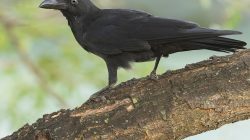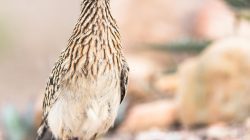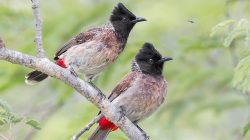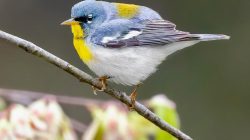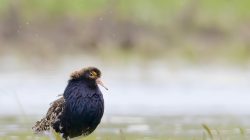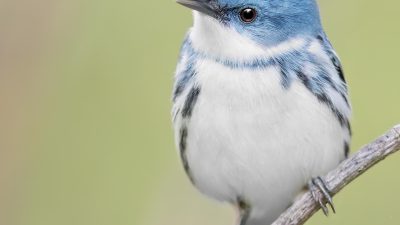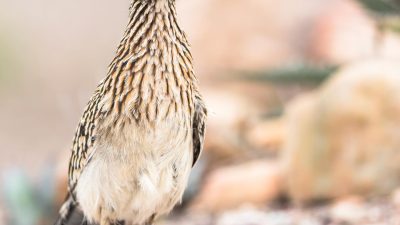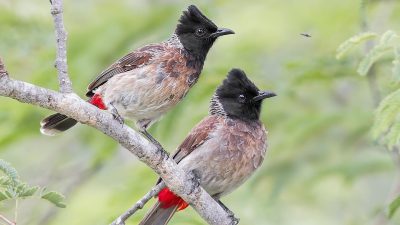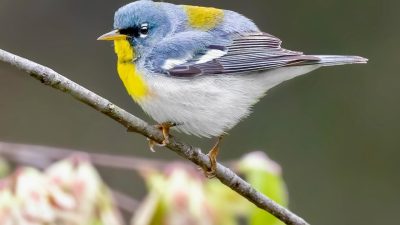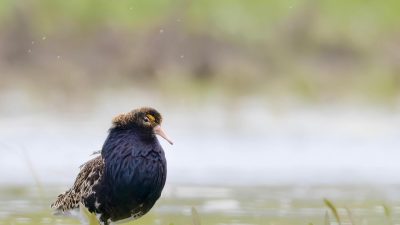The Yellow breasted Chat (Icteria virens): A Comprehensive Overview
Diajar.net – The Yellow breasted Chat (Icteria virens) is a distinctive species of songbird that has intrigued birdwatchers and ornithologists alike due to its unique characteristics, captivating behavior, and habitat preferences. A member of the Icteridae family, the Yellow breasted Chat is known for its vibrant plumage, loud and complex vocalizations, and its elusive presence in dense habitats. This article aims to explore the origins, physical appearance, distribution, geography, lifestyle, diet, population dynamics, and conservation status of this fascinating species.
Origin of the Animal Name
The scientific name of the Yellow breasted Chat, Icteria virens, carries significant insight into both its taxonomic classification and its physical characteristics. The genus name Icteria derives from the Greek word “ikteros,” meaning “yellow,” which is an allusion to the bird’s prominent yellow breast. The species epithet, virens, is Latin for “greenish” or “verdant,” which refers to the bird’s greenish upperparts, often described as olive or grayish-green.
The common name, “Yellow breasted Chat,” directly reflects its most striking feature—its bright yellow chest that contrasts with its olive and brownish-green back. The use of the word “chat” in its common name refers to the bird’s vocal nature, as “chat” is a term used for small songbirds that are known for their noisy calls.
Appearance
The Yellow breasted Chat is a medium-sized passerine bird, measuring about 7.5 to 9 inches (19 to 23 cm) in length. The males and females look similar, although males may exhibit slightly more vivid plumage during the breeding season.
The most striking feature of the Yellow breasted Chat is its yellow breast, which stands out in sharp contrast to the dull olive-green or grayish-green of its back. The belly is also yellow, and there is a pale ring around its eyes, which gives the bird a unique, masked appearance. The wings and tail are dark with white edges, adding to the bird’s overall bold yet subdued coloration.
The bird’s beak is stout and slightly curved, making it well-suited for its varied diet. Its legs are long and powerful, allowing it to perch and hop between dense shrubs and trees. One of the most remarkable aspects of the Yellow breasted Chat’s appearance is its large, expressive eyes, which add to the bird’s seemingly curious and alert demeanor.
Distribution
The Yellow breasted Chat is primarily found in North America. Its range stretches across the southern United States and into parts of Central America. However, the bird’s population density varies depending on location and season.
During the breeding season, the Yellow breasted Chat is most commonly found in the southeastern United States, including parts of Texas, Louisiana, Alabama, Georgia, and Florida. It is also found in the central regions of the U.S. and into parts of Mexico. In winter, the bird migrates south to central and southern Mexico and northern Central America, where it finds more temperate conditions.
This bird has been observed in a wide range of habitats, typically in riparian areas, scrubby woodlands, and dense thickets. They thrive in areas with dense vegetation and areas that are slightly disturbed by human activity, such as abandoned fields and the edges of cultivated lands.
Geography
The geography of the Yellow breasted Chat’s habitat plays a significant role in its distribution and migration patterns. In the United States, it is found in the Great Plains, extending southward into parts of Texas, Louisiana, and Florida. Additionally, isolated populations of Yellow breasted Chats are found in the southwestern United States and parts of Mexico.
The bird favors riparian zones—areas near watercourses—and wooded environments with thick undergrowth, which provide both shelter and abundant food. During migration, the Yellow breasted Chat moves to regions where the vegetation is lush and the climate is more favorable to its survival, particularly in southern Mexico and Central America.
As the species migrates, it navigates through geographical features like valleys, rivers, and forests that provide adequate cover and food sources. These geographical elements are essential for the bird’s survival, both during migration and throughout its year-round distribution.
Habits and Lifestyle
The Yellow breasted Chat is known for its somewhat elusive and secretive behavior. Unlike many other songbirds, which tend to be quite social, the Yellow breasted Chat is more solitary or lives in small family groups. It is often found in dense shrubbery or forest edges, where it uses its excellent camouflage to stay hidden from predators and to hunt for food.
The bird’s most remarkable behavior is its vocalizations. The Yellow breasted Chat is renowned for its diverse and loud repertoire of sounds, which include whistles, squawks, and complex songs. These calls are especially prominent during the breeding season when the male uses vocalizations to establish territory and attract a mate. The vocalizations are often delivered from the cover of thick foliage, making the bird difficult to spot even though its presence is obvious through the noisy calls.
Despite its relatively secretive nature, the Yellow breasted Chat is highly active. It is known to hop between shrubs and trees, using its long legs to perch and dart about with agility. During migration, the bird engages in long-distance flights, often traveling in the cover of dense vegetation and avoiding open spaces.
Diet and Nutrition
The Yellow breasted Chat is an omnivorous bird with a varied diet that includes insects, fruits, seeds, and small invertebrates. Insects form a large portion of the diet, especially during the breeding season when the bird needs extra protein to fuel its energy-intensive activities. The bird feeds on a wide range of insects, including beetles, grasshoppers, and caterpillars, which it often captures by foraging on the ground or in low shrubbery.
In addition to insects, the Yellow breasted Chat consumes berries, seeds, and small fruits. These provide the bird with essential carbohydrates and sugars, which are crucial for maintaining energy levels during migration and throughout its breeding season. Common fruits in the diet of the Yellow breasted Chat include blackberries, elderberries, and various wild fruits that are found in its habitat.
During the winter months, when insects are less abundant, the Yellow breasted Chat’s diet may shift to more fruit and seeds, which are readily available in its southern migratory habitats. This flexibility in diet allows the species to adapt to changing environmental conditions.
Population and Number of Populations
The population of the Yellow breasted Chat is subject to fluctuations based on seasonal migration, habitat availability, and environmental factors. The bird’s population has been estimated to range between 1 million to 3 million individuals. However, this number is not static and can vary depending on the time of year and the bird’s migration patterns.
The Yellow breasted Chat is a migratory bird, so its population density can be quite low in certain areas during the winter, when many birds migrate south. In the breeding season, populations tend to be concentrated in the southeastern U.S., particularly in areas with abundant riparian habitats. These populations are usually concentrated in areas where there is suitable dense vegetation, which the bird requires for shelter and foraging.
Due to the bird’s migratory nature, it is difficult to pinpoint a fixed number of breeding pairs in any given area. However, studies suggest that there are robust populations in certain regions of the southeastern United States, although habitat loss in these areas is a growing concern.
Conservation
While the Yellow breasted Chat is not currently listed as endangered or threatened, its population faces a range of conservation challenges. The primary threat to the Yellow breasted Chat comes from habitat destruction. The bird depends on dense vegetation, particularly in riparian areas, which are increasingly being impacted by human activity such as urban development, agriculture, and deforestation.
Efforts to conserve the Yellow breasted Chat are focused on preserving and restoring its natural habitats. Conservation programs aim to protect riparian zones, wetlands, and scrubby woodlands, which are essential for the bird’s survival. In some regions, conservationists are working to create protected areas where the Yellow breasted Chat can thrive without the immediate threat of habitat degradation.
Additionally, conservation efforts include the restoration of areas that have been damaged by human activity, such as replanting native vegetation and implementing sustainable land management practices. By ensuring the availability of suitable habitats for the Yellow breasted Chat, conservationists aim to stabilize and possibly increase the bird’s population in the future.
Conclusion
The Yellow breasted Chat (Icteria virens) is a captivating species that plays an important role in the ecosystems it inhabits. Known for its striking appearance, varied diet, and complex vocalizations, it has earned a special place in the hearts of birdwatchers and researchers. While the species is not currently in danger of extinction, it faces significant threats from habitat loss and environmental changes. Continued conservation efforts will be crucial in ensuring that this beautiful and enigmatic bird remains a part of North America’s avian diversity for generations to come. By understanding the Yellow breasted Chat’s behavior, habitat needs, and conservation status, we can take steps to protect it and ensure its continued presence in our natural world.

